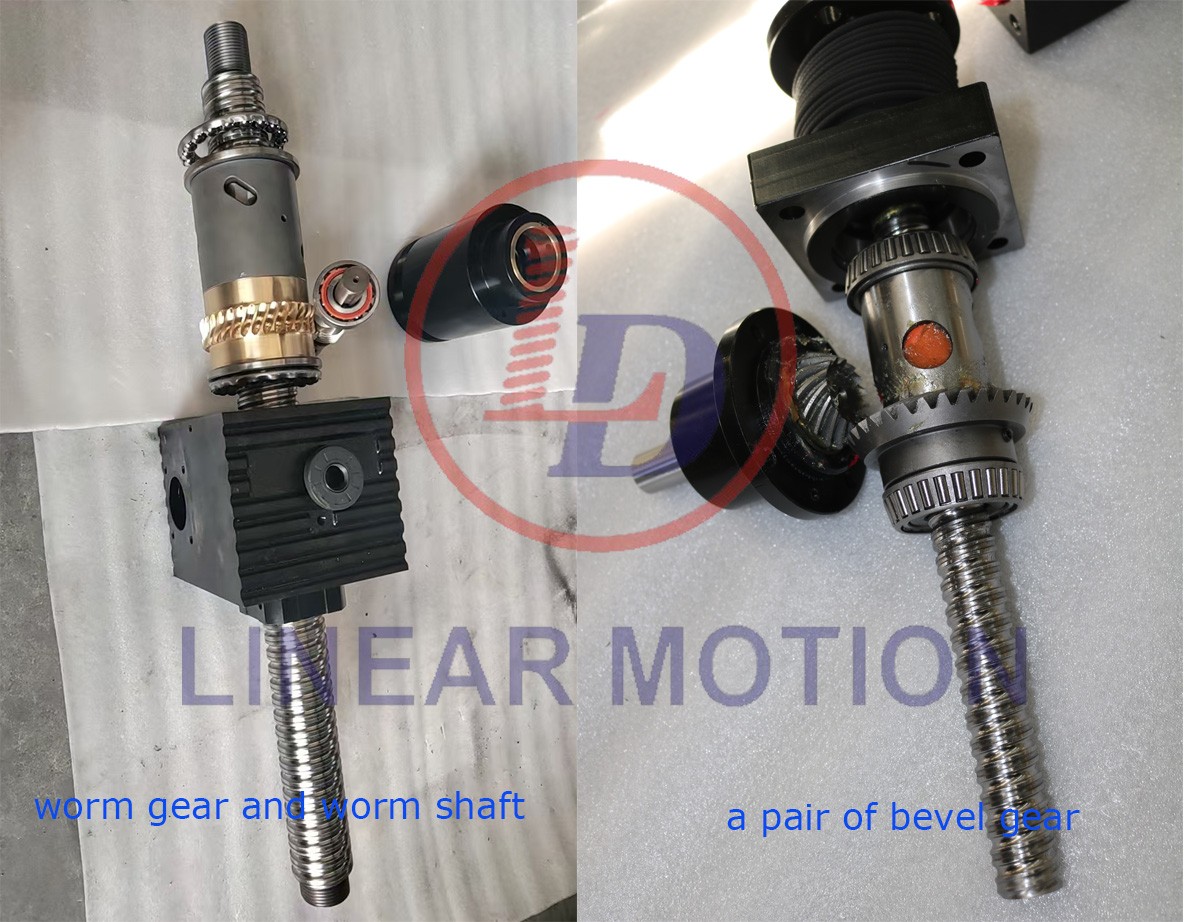1. Gear Mechanism
-
Worm Gear Screw Jack: Uses a worm gear mechanism, where a worm (screw) engages with a worm wheel (gear) to transmit motion. The worm gear reduces speed while increasing torque.
-
Bevel Gear Screw Jack: Uses bevel gears, which are conical gears designed to transmit motion between intersecting shafts, typically at a 90-degree angle.
2. Speed and Efficiency
-
Worm Gear Screw Jack: Generally slower but provides higher torque and self-locking capability.
-
Bevel Gear Screw Jack: Offers higher efficiency and faster speed but may require a brake system to prevent back-driving.
3. Load Handling Capacity
4. Self-Locking Feature
-
Worm Gear Screw Jack: Typically self-locking, meaning it can hold a load in position without additional braking.
-
Bevel Gear Screw Jack: Not usually self-locking, so an external brake or locking mechanism may be needed.
5. Efficiency & Power Consumption
-
Worm Gear Screw Jack: Less efficient due to friction in the worm gear system, leading to higher power consumption.
-
Bevel Gear Screw Jack: More efficient with lower power consumption due to better mechanical advantage.
6. Application Suitability
-
Worm Gear Screw Jack: Used in applications requiring high force, stability, and safety, such as lifting platforms, heavy machinery, and presses.
-
Bevel Gear Screw Jack: Ideal for applications needing high-speed movement with moderate force, such as automation systems, conveyor adjustments, and stage lifting.
You can choose the appropriate lift according to your working conditions.You can choose the appropriate lifter according to your working conditions. If it is slow, low frequency and self-locking, the worm gear screw lifter is suitable. If it is fast and high frequency, then the bevel gear lifter is suitable.
